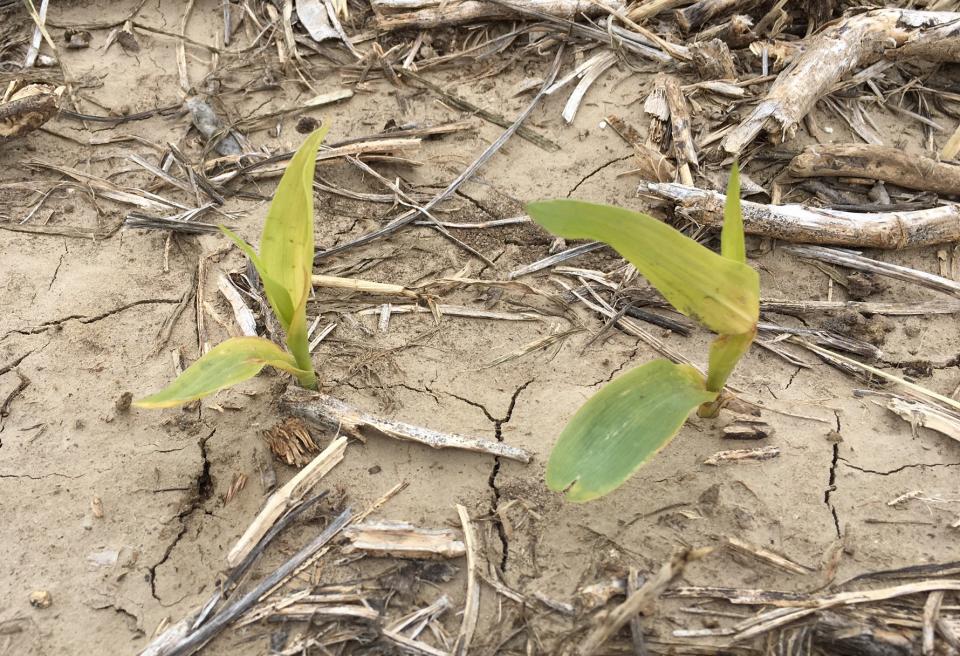
Yellow Corn Seedlings … A Transition Phase Between Heterotrophic And Autotrophic Growth?
Wet, cool weather prior to V4 or V5 (Abendroth et al., 2011), often results in yellow corn seedlings. This year is no exception. Some of this may be associated with “cross banding” as reported in the May 12 CropWatch article (Elmore and McMechan, 2017).
However, when corn seedlings experience cool wet weather like they have this year, some of the widespread yellowing may be simply due to the slightly sun- and heat-starved seedlings running out of the seed’s stored energy before the main nodal roots take over. Some have called this corn’s “ugly-duckling” stage. We saw this yellowing last year as well (Elmore, 2016).
Growth based on the seed’s stored energy reserves is termed heterotrophic growth; whereas, subsequent growth that is more soil-resource and photosynthesis dependent is called autotrophic growth (Greaves, 1996). Autotrophic growth occurs when a seedling is capable of self-nourishment using inorganic compounds and photosynthesis. Heterotrophic growth occurs when seedlings obtain carbon for growth from organic compounds stored in the seed.
With both situations, whether cold banding or simply sun and heat starved during the late heterotrophic stage, seedlings will pass through this phase and yields will be hardly phased ― if at all. Sun and warmer temperatures are prescribed.
References
Abendroth, L.J., R.W. Elmore, M.J. Boyer, and S.K. Marlay. 2011. Corn growth and development. PMR 1009. Iowa State Univ. Extension. Ames, IA.
Elmore, R. 2016. Why are emerged corn seedlings yellow? CropWatch. UNL.
Elmore, R. and J, McMechan. 2017. “Cross-banding” on corn leaves due to pre-emergent, cold soil temperatures.
Elmore, Roger. 2017. Cross-banding on corn: one week later. UNL CropWatch.
Greaves. J.A. 1996. Improving suboptimal temperature tolerance in maize — the search for variation. Journal of Experimental Botany, Vol. 47, No. 296, pp. 307-323.

Online Master of Science in Agronomy
With a focus on industry applications and research, the online program is designed with maximum flexibility for today's working professionals.
